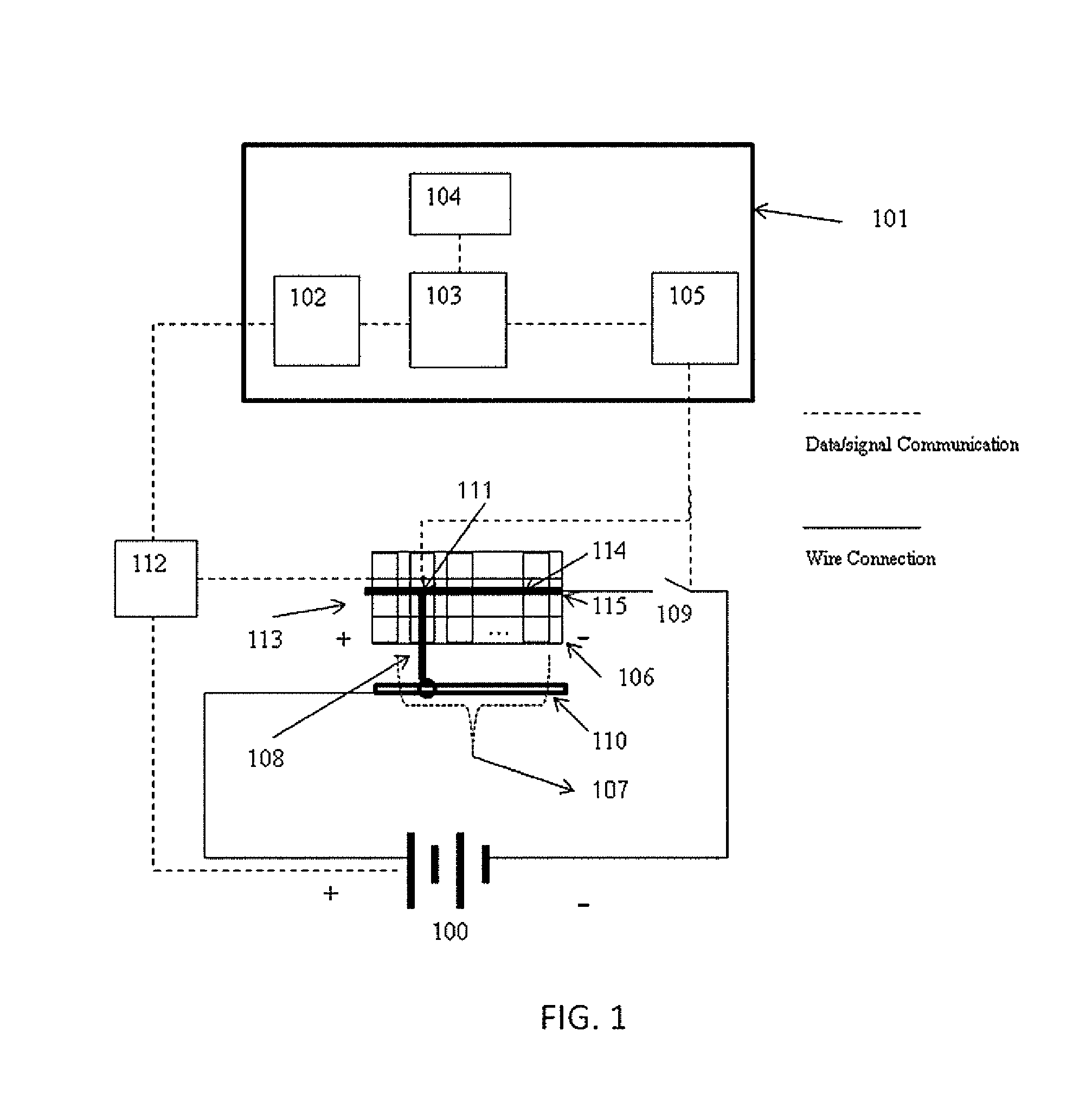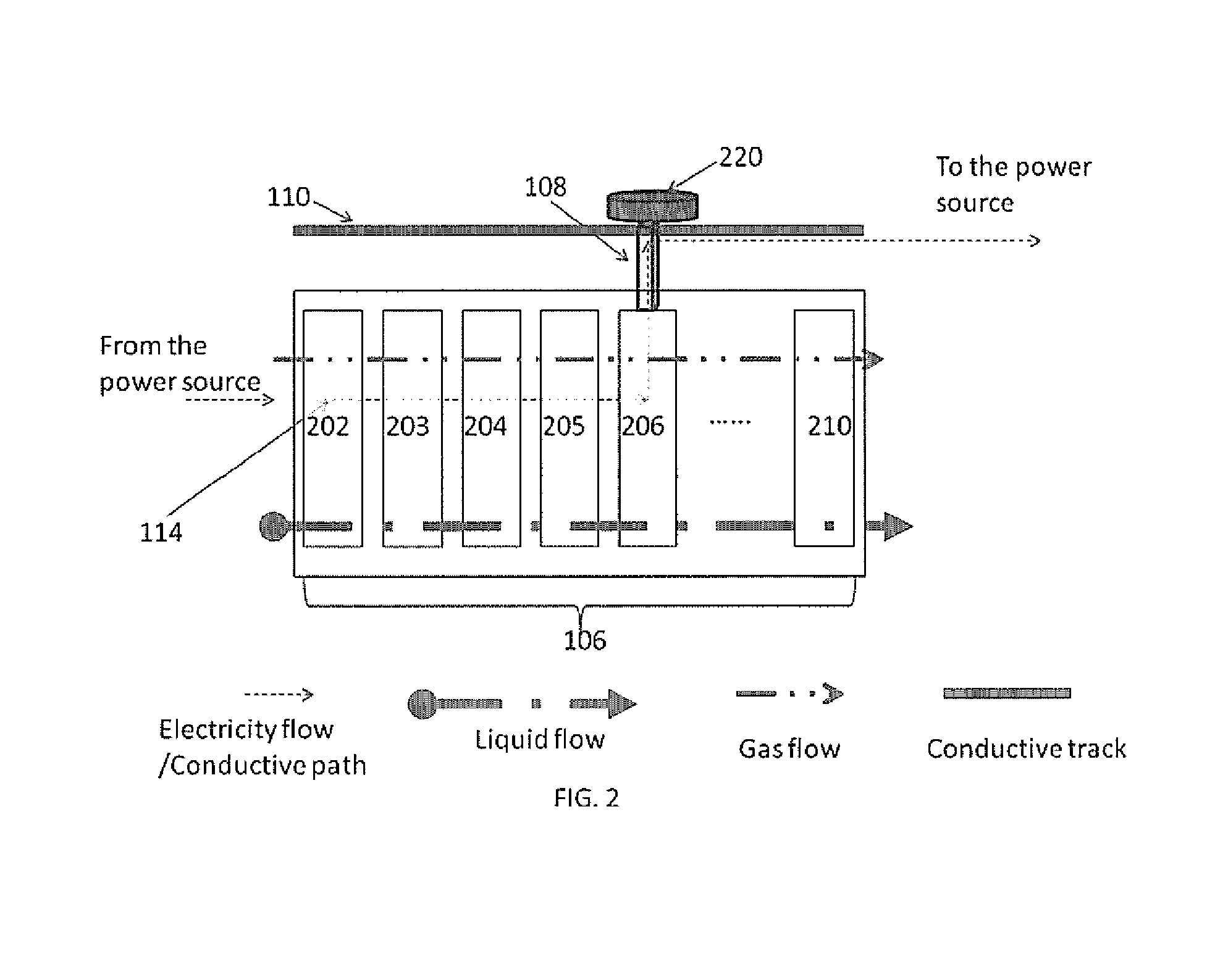Electrolytic hydrogen generation with adjustable operating capacity
a hydrogen generation and operating capacity technology, applied in the direction of energy input, manufacturing tools, electric circuits, etc., can solve the problems of large amount of generated power wasted, inefficiency, and inability to effectively and fully utilize conventional electrolysis systems, so as to reduce the technical complexity of the hydrogen generation system, improve the popularity of hydrogen, and reduce the cost of hydrogen production.
- Summary
- Abstract
- Description
- Claims
- Application Information
AI Technical Summary
Benefits of technology
Problems solved by technology
Method used
Image
Examples
Embodiment Construction
[0014]The present application describes a hydrogen generation system with an automatic control capability, and more particularly a high-efficiency electrolyzes that adjusts to volatility and changes of the power source, thus efficiently converting a volatile energy source into hydrogen fuel energy.
[0015]Various embodiments are described herein in detail. It is to be understood, however, that features described with reference to one or more embodiments need not, in general, be present in all embodiments. Accordingly, the described example embodiment is to be considered illustrative and not limiting.
[0016]For simplicity and clarity of illustration, the drawing figures illustrate the general manner of construction, and description and details of well-known features and techniques may be omitted to avoid unnecessarily obscuring the invention. Additionally, elements in the drawing figures are not necessarily drawn to scale; some areas or elements may be expanded to help improve understan...
PUM
| Property | Measurement | Unit |
|---|---|---|
| operational voltage | aaaaa | aaaaa |
| operating voltage | aaaaa | aaaaa |
| operating voltage | aaaaa | aaaaa |
Abstract
Description
Claims
Application Information
 Login to View More
Login to View More - R&D
- Intellectual Property
- Life Sciences
- Materials
- Tech Scout
- Unparalleled Data Quality
- Higher Quality Content
- 60% Fewer Hallucinations
Browse by: Latest US Patents, China's latest patents, Technical Efficacy Thesaurus, Application Domain, Technology Topic, Popular Technical Reports.
© 2025 PatSnap. All rights reserved.Legal|Privacy policy|Modern Slavery Act Transparency Statement|Sitemap|About US| Contact US: help@patsnap.com



